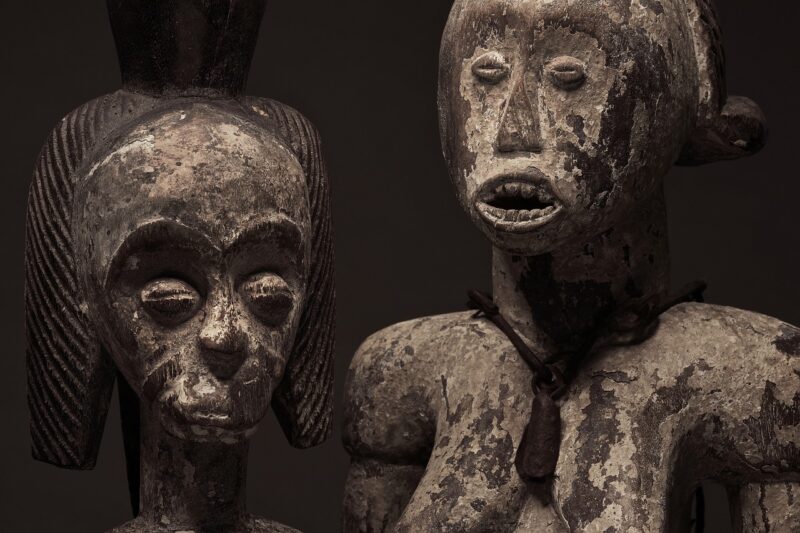The Historical Significance of Iron in African Art and Tools
November 14, 2024

Iron has played a pivotal role in the development of various civilizations around the globe, but its significance in Africa is particularly profound. From ancient tools to intricate art pieces, iron has shaped economies, cultures, and social structures across the continent. This article delves into the historical significance of iron in African art and tools, exploring its impact on craftsmanship, trade, and the manifestation of cultural identity.
The Advent of Iron in Africa
Historians believe that ironworking arrived in Africa around 1200 BCE, likely via migrations from the Near East and the Mediterranean. This technological shift from stone to iron revolutionized the way communities lived, worked, and interacted with each other. Unlike other materials, iron was abundant and accessible, allowing societies to develop innovative tools and weapons.
One of the earliest known ironworking sites in Africa is found in the region now known as Nigeria, with evidence indicating that the Nok culture was among the first to design metal objects for both utility and aesthetic purposes. These innovations not only facilitated agricultural practices but also played a role in crafting products that embodied cultural significance, as iron tools were wielded to execute specific crafts and art forms.
Iron Tools: Practical Innovations in Agriculture and Craftsmanship
The impact of iron on agriculture cannot be underestimated. Iron tools such as plows and hoes allowed for increased efficiency in farming. This led to improved crop yields and the ability to sustain larger populations, fostering the growth of more complex societies.
Alongside agriculture, iron tools greatly influenced craftsmanship. Blacksmiths, who specialized in ironwork, emerged as key figures in communities. They created not only farming tools but also weapons, thus enhancing the security and defense of their villages. The artistry inherent in crafting these tools showcases a deep understanding of metallurgy and a cultural significance attached to the objects produced.
Ironworking communities developed complex social hierarchies based on skills and the ability to manipulate this invaluable material. Specialization in different types of ironwork often led to artistic variations, creating unique cultural expressions in different regions of Africa.
The Art of Iron: Sculptures and Symbolism
Iron’s role in art history is not limited to utilitarian objects. The continent has a rich tradition of iron sculptures that carry great significance. For instance, the famous Benin Bronzes, although primarily made using a lost-wax casting method with copper alloys, often incorporated iron elements, reflecting Africa’s deep appreciation for metalwork.
In many cultures, iron has been used to create ceremonial items, ornaments, and symbols of prestige. The Bantu-speaking tribes of Central Africa, for instance, produced intricate iron jewelry, while many West African societies used iron to craft sacred objects, representing power, protection, and spiritual beliefs.
Iron objects also played a significant role in rituals. Some communities believed that iron held protective qualities, and thus, iron artifacts were often placed in burials or during important rites of passage. The aesthetic appeal of iron not only contributed to its functionality but also allowed communities to express social status and identity through beautifully crafted items.
Trade and Economy: Iron as Currency
Iron also played a significant role in trade dynamics across Africa. As societies embraced ironworking, they began to exchange iron goods, creating networks of trade that stretched across the continent. Iron objects became a medium of exchange in various communities, sometimes even serving as currency.
The demand for iron was high due to its essential role in agriculture and craftsmanship. Consequently, trade routes were established, facilitating the exchange of iron tools and artistic products between regions. This not only encouraged interaction between diverse cultures but also fostered economic growth and stability within communities.
Throughout history, the value of iron continued to evolve, and as the demand for iron tools increased, so did the competition among societies over iron resources. This competition would sometimes fuel conflicts, further adjusting the relationships among African societies.
The Legacy of Iron in Contemporary African Cultures
Today, the legacy of iron continues to resonate within contemporary African societies. Traditional blacksmithing is not only a craft but a cultural identity reflecting historical practices and ancestral knowledge. Many artisans today carry on the legacy, blending traditional techniques with modern influences to create contemporary art pieces that still honor the cultural significance of iron.
Moreover, iron remains integral to various cultural practices. Festivals and events celebrating the craftsmanship of ironworking are common, serving to highlight the material’s importance in both historical and modern contexts. Communities often gather to honor blacksmiths, showcasing their works and celebrating the artistry that has been passed down through generations.
As Africa continues to evolve, the historical significance of iron as a material and a symbol of identity remains irreplaceable. From its invention to its current integration into cultural celebrations, iron’s profound legacy within African art and tools underscores the continent’s rich history and craftsmanship.
Conclusion
Iron has played an invaluable role in shaping the social, economic, and cultural landscapes of Africa throughout history. It has transitioned from a practical material for tools to a deep-seated symbol of identity, craftsmanship, and trade. The intricate artistry of ironwork not only serves as a tribute to African heritage but also continues to inspire contemporary artisans throughout the continent. As societies evolve, the significance of iron will undoubtedly persist in its ability to connect people to their history and culture, proving that even materials that may seem ordinary possess extraordinary stories of human endeavor and creativity.
By understanding the historical significance of iron in African art and tools, we gain insight into the broader narrative of technological advancement, cultural expression, and economic development that continues to evolve in the modern era.








